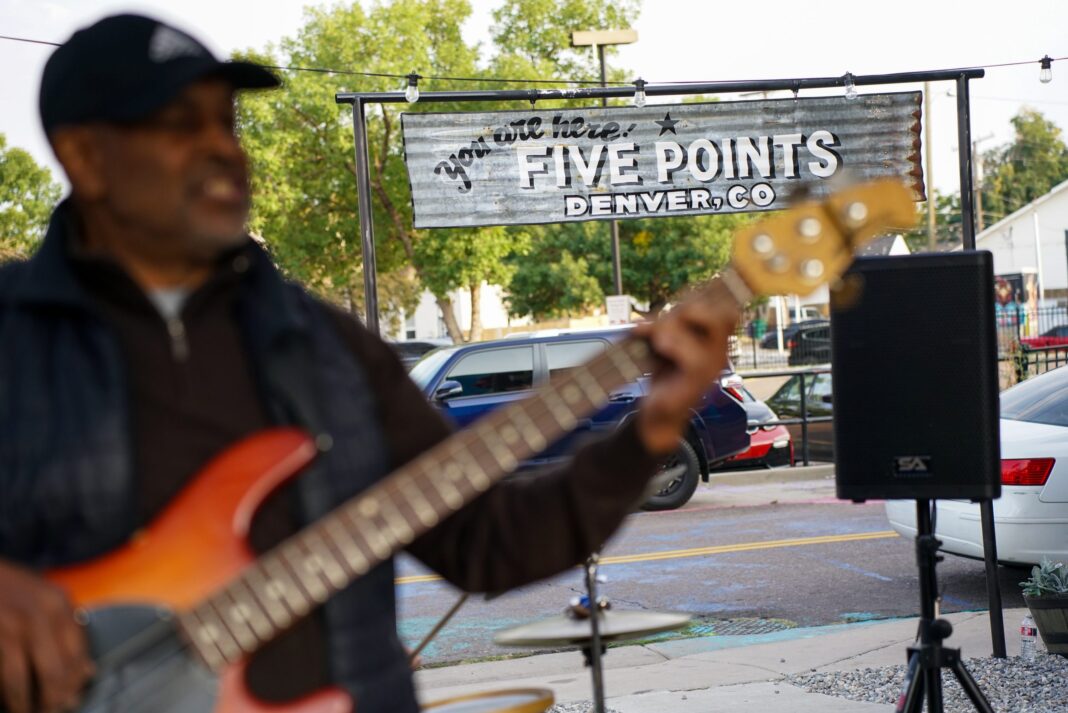Reviving the Spirit of Five Points: A Neighborhood’s Journey Through Music, Food, and Community
The evening air is filled with laughter and conversations as Devante Jackson-Brown tends to his smoker just outside a bustling brewery. As he flips chicken wings and stirs a vat of black-eyed pea stew, the sweet smoke curls upward, mingling with the lively melodies of a jazz band setting up at Spangalang Brewery. Nearby, children are lost in creativity, drawing on the sidewalk, their parents absorbed in the rhythm of a vibrant three-man band.
A Historic Corridor with a Bright Future
This scene unfolds against the rich backdrop of Five Points, a neighborhood entrenched in Denver’s jazz history and a storied past marred by segregation and redlining. Known as the “Harlem of the West” in the 1920s, Five Points is on a mission to reclaim its heritage while charting a new course for its community.
Every first Friday of the month, the corridor becomes a melting pot of flavors and sounds during the First Friday Five Points Jazz Hop. Visitors flock to sample jerk chicken from Welton Street Cafe and vibrant gazpacho from TeaLee’s Tea House, zigzagging through restaurants and parks to soak in live performances from overlapping bands. This is not merely a nostalgia trip; it pulses with the vigor of community transformation.
The Resurgence of Five Points Jazz Hop
The Jazz Hop embodies a fresh vision—not a mere revival of the bygone Roaring ’20s but a reimagining of what a neighborhood can be. Norman Harris, executive director of the Five Points Business Improvement District, reflects on the crowd gathering for the festivities. With aromas of barbecued chicken wafting through the air, he identifies the power of music as a connector—a vibration uniting people of all backgrounds.
Harris’s passion is palpable. He grew up in the very neighborhood he now seeks to uplift, blending past dreams with present realities. “People come to Five Points and they want the Five Points of the 1920s,” he explains, affirming the importance of balancing pride in the neighborhood’s legacy with the need for growth and diversity.
A Community Amidst Challenges
However, revitalization efforts face their share of hurdles. The corridor has seen a decline of Black-owned businesses, raising concerns among community leaders. Efforts reminiscent of past economic hardships are ongoing, with local businesses constantly striving to stay afloat amidst gentrification pressures and infrastructural challenges, such as the disruptive light rail line.
As Harris navigates this complex environment, he seeks to attract new businesses while emphasizing the success of those that embody the neighborhood’s rich cultural tapestry. “My goal is to put a stop to that cycle and to figure out how to address the deprioritization of investing in this corridor,” he states—a reminder that investment in cultural and communal pillars remains essential.
Community Institutions: Heart and Soul of Five Points
Within this dynamic neighborhood, enduring institutions like TeaLee’s Tea House stand as beacons of resilience. Founded in 2018, the establishment is more than a café; it’s a hub for conversation and celebration. Owner Risë Jones seeks to reconcile the neighborhood’s historic roots with a modern narrative. “We need that place,” she affirms, echoing the sentiment of community members who yearn for a cohesive identity.
As the Jazz Hop unfolds, TeaLee’s bustling ambience hints at a deeper yearning for connection—between the past and present, between various cultural identities.
The Role of Juneteenth in Neighborhood Culture
Notably, community gatherings such as the Juneteenth Music Festival assert Five Points as a cultural anchor. Drawing thousands upon thousands, the festival creates a vibrant atmosphere where both old residents and newcomers can mingle, enjoying lively performances that echo the neighborhood’s vibrant history.
In the midst of this cultural renaissance, individuals like Fathima Dickerson of the Welton Street Café draw from personal histories intertwined with the neighborhood. Reopening after a brief closure, the café seeks to provide not just food but a place where families can establish new traditions, all while nurturing a diverse clientele.
Bridging the Past and Future
Five Points is once more becoming a destination. From the cherished memories surrounding community festivals to the dynamic energy of jazz nights, the neighborhood is actively reclaiming its heritage. Local artists and business owners spotlight the cultural significance of the area, bringing forth historical stories of resilience.
As with neighborhoods across the nation, the balance between old and new is both delicate and vital. As Cleo Parker Robinson, founder of the Cleo Parker Robinson Dance Studio, poignantly states, people used to know exactly where to find community in Five Points. Today, initiatives aim to recapture that same sense of belonging, where everyone—from those who have always lived there to those who have just discovered it—can find a home.
In a world where gentrification often threatens the soul of urban communities, Five Points stands at the forefront of survival and reinvention. It is a space that represents pride, survival, and community—a living testament to “making a way out of no way.” Here, the sounds of jazz and the scents of seasoned cooking are ushering the neighborhood into a promising future, built on the echoes of its storied past.



